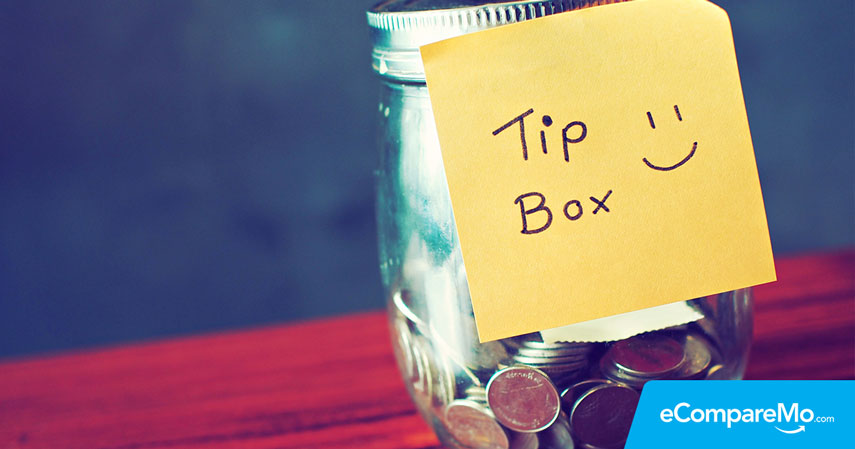Here’s How Much Tip You Should Give To Everyone
3 min readBrush up on these pro-tips on tipping, Pinoy style.

Ever wonder if you are tipping right? How much should you really give to the barista who made your favorite handcrafted beverage? Should you leave a tip for the waiter even if the restaurant has added a service charge to your bill? What do parking attendants and gasoline boy feel about the Php5 tip you just gave?
eCompareMo tries to answer all your questions about the way we tip, and more.
Tipping the Filipino way
There is no established tipping etiquette in the Philippines, compared to other countries where one is expected to leave a certain amount at the restaurant table or risk getting arrested.
Evidently, tipping here varies per individual and is subjective to one’s satisfaction, financial capacity, and generosity. A thread on reddit.com discusses the tipping culture in the Philippines. Here’s a remarkable insight from user coffeefiefofum:
1. Salons: I give Php100+ to my stylist; Php20 to the shampoo/blow-dry assistant; Php50 to the nail tech.
2. Restaurants: Php50 to Php200 depending on the service, the size of the group, and the bill.
3. Taxis: Drivers usually negotiate their “tip” before driving. Rarely have I experienced one who did not demand for extra payment. Those who don’t, however, are far more likely to be pleasant conversationalists and actually deserve the tip.
How Pinoys tip
For self-service restaurants: Let your spare change rain in the tip box.
For sit-down bistros and cafes: No service fee, Php50 to Php100; with service charge, Php20 to Php50
For cab drivers: Smooth traffic flow, Php20, or keep spare change; when traffic, Php50
For parking attendants and gasoline boys: Php5 to Php10
For beauticians and masseurs/masseuses: Php20 to Php50
For “Merry Christmas†envelopes: Php50 to Php100
Mandatory vs. gratuity
Many customers confuse service charge and tip as one and the same thing. Service charge (SC) is a fee added on top of the actual cost of purchased product or service.
The Labor Code of the Philippines states that “all service charges collected by hotels, restaurants, and similar establishments shall be distributed at the rate of eighty-five percent (85%) for all covered employees and fifteen percent (15%) for management. The share of the employees shall be equally distributed among them. In case the service charge is abolished, the share of the covered employees shall be considered integrated into their wage.â€
SC, therefore, is mandated by law, whether or not you’re satisfied with the establishment’s service—and part of it goes to the management. A tip, however, is the obligatory amount you give directly to the service personnel as a form of reward for satisfactory service.
Of course, you may skip tip-giving when a service charge has been added to your bill, though no one’s stopping you from leaving some spare cash in the bill folder if you’re satisfied with the service.
What people feel about your tip
eCompareMo talked to a number of employees from the service industry. As it turns out, most of them view tip as their performance rating. For them, a bigger amount equates to a five-star customer satisfaction.
Some, like restaurant personnel Christopher Laurente, feel highly rewarded even with just a few coins, or a Php20-peso bill. “A tip is a tip; it’s better than nothing,†he said. “Pag naipon naman yun, malaki naman na rin. It means na okay yung service mo sa customer.â€
What do they feel when customers leave nothing for them? “Kung walang service charge at tip, di na siguro maganda,†he says. “I’m just being practical. As a waiter, I look for employers that charge SC, for bigger income.â€
Reddit user sncgf appeals to everyone to always leave tips. “I’m not joking when I say an extra Php20 or even Php10 every day can make a big difference to people who have next to nothing,†he says. “There are people who truly do rely on tips to keep them afloat. I really do hope you reconsider it.†–Diana Lyn Balbalosa
